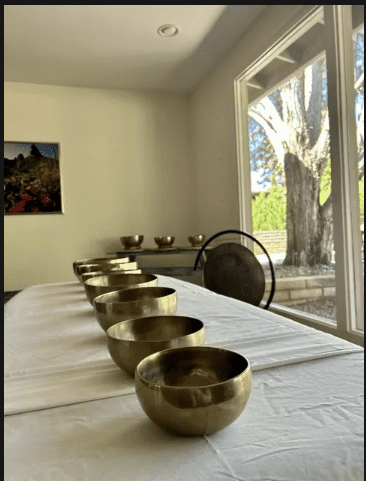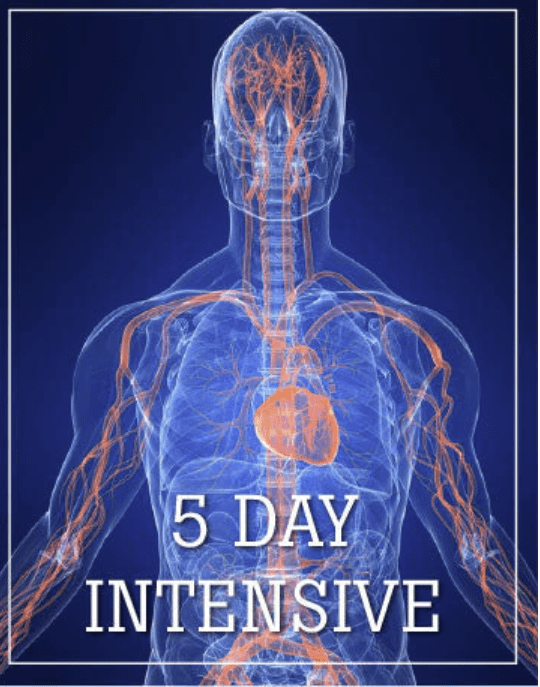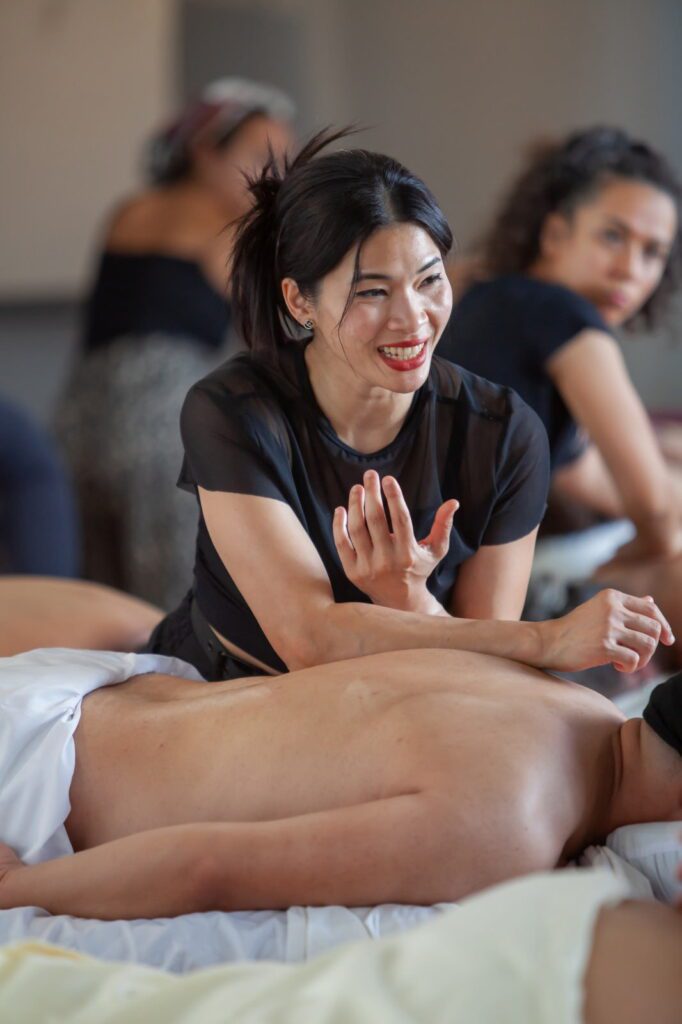
- This event has passed.
Exploring the Human Body through Cadaver Lab-3CE
December 13, 2024 @ 12:00 pm – 3:00 pm
Exploring the Human Body through Cadaver Lab
3CE approved by NCBTMB Course ID: CE4021022
Date: Friday, December 13th, Lab 12-3pm
Tuition Investment: $100, Pay Here: https://square.link/u/2DyVKc7N
Arizona School of Medical Massage and Wellness-Approved Provider#:451668-11
Description:
This 3 CE course offers Licensed Massage Therapists a unique, hands-on opportunity to deepen their anatomical understanding through direct interaction with pre-dissected cadaveric specimens. Participants will explore major anatomical structures, including muscles, bones, nerves, and organs, in a controlled and respectful environment. Through guided examination and palpation, attendees will enhance their knowledge of the human body’s spatial relationships and functional anatomy, directly relating this to massage therapy practice.
Students will develop practical skills in handling and examining cadaveric material with gloves and aprons, ensuring safety and respect for the donors. The course will emphasize the clinical correlations between anatomical structures and massage therapy techniques, helping students recognize anatomical variations, multi-layered tissues, and their implications for therapeutic practice. Additionally, students will engage in discussions on the ethical considerations of using cadaveric specimens, fostering a deeper appreciation and respect for the individuals who have donated their bodies for educational purposes.
By the end of this course, participants will have enhanced their anatomical knowledge, improved their palpation skills, and developed a greater awareness of the ethical dimensions of their practice, ultimately contributing to more effective and informed massage therapy treatments.
Materials Required and Provided by ASMMW: Disposable gloves and aprons. Personal protective equipment (PPE) adherence is mandatory. Masks are optional.
By completing this course, massage therapy students will gain valuable insights and practical skills that will enhance their professional practice and contribute to their continuing education.
Pre-requisite: Honor system. Go to: https://www.gilhedley.com/membership and get the FREE “Easy Rider” membership and watch Integral Anatomy videos (at least the first few videos-the Skin, Superficial Fascia, Deep Fascia, and Muscle layers).
Location: GCU Grand Canyon University, 3300 W Camelback Rd, Bldg 57, 1st Floor Lab. Directions will be emailed after purchase.
Transportation: Students may meet at ASMMW 8279 W. Lake Pleasant Pkwy, Suit 106, Peoria, AZ 85382, at 11am, and travel to lab together. Space is limited in my vehicle, so call in advance if you want to ride share. We will trave back to school after the Lab, arriving approximately 3:30pm.
Disclaimer: Travel time and prerequisite involves extra time not included in CE hours.
Future Events: https://az-medicalmassageschool.com/events
- Friday Dec 13 from 12-3pm
- Friday Jan 3 from 12-3pm
Contact: Tammy Roecker 602-697-6463, [email protected]
Course Outline: Exploring the Human Body through Cadaver Lab
15 Min Introduction and Lab Rules
Welcome and Introduction
- Course objectives and outcomes
- Importance of anatomical knowledge in massage therapy
Lab Rules and Safety Procedures
- Proper handling of cadaveric material
- Lab coat and/or scrubs must be worn in the lab
- Plastic aprons
- Ethical considerations and respect for donors
- No food or drinks in the lab.
- No phones (picture capable devices) in the lab.
- Closed toed shoes must be worn in the lab.
- Gloves are to be disposed of in the yellow bins throughout the lab.
Outline:
15 Min Ethical Orientation Session
- Importance of ethical conduct in the cadaver lab
- Respect for the donors and their contribution to education
- Brief discussion on consent and the donation process
30 Min Guided Anatomical Exploration: Prone Cadaver
– Back Muscles
- Trapezius
- Latissimus Dorsi
- Rhomboids (Major and Minor)
- Erector Spinae Group
– Gluteal Region
- Gluteus Maximus
- Gluteus Medius and Minimus
- Piriformis
– Posterior Thigh and Leg
- Hamstrings (Biceps Femoris, Semitendinosus, Semimembranosus)
- Gastrocnemius
- Soleus
30 Min Guided Anatomical Exploration: Supine Cadaver
– Neck and Chest Muscles
- Sternocleidomastoid
- Pectoralis Major and Minor
- Scalene Muscles
– Abdomen
- Rectus Abdominis
- External and Internal Obliques
- Transversus Abdominis
– Anterior Thigh and Leg
- Quadriceps Group (Rectus Femoris, Vastus Lateralis, Vastus Medialis, Vastus Intermedius)
- Sartorius
- Tibialis Anterior
30 Min Exploration of Layers and Structures
– Superficial to Deep Layers
- Identifying and understanding the layers of muscles
- Examining connective tissues: Fascia and Tendons
– Important Nerves and Vessels
- Sciatic Nerve (Prone)
- Brachial Plexus (Supine)
- Major Blood Vessels (Femoral Artery, Carotid Artery)
30 Min Clinical Correlation and Practical Application
– Relating anatomical findings to massage therapy
- Case studies and real-world applications
- Discussion on anatomical variations and their implications for therapy
– Hands-on practice with guidance
- Practicing palpation and identification on cadaveric specimens
- Peer collaboration and feedback
15 Min PPE Disposal and Hand Sanitization
– Proper disposal of gloves and aprons
- Following lab protocols for biohazard materials
– Hand sanitization
- Ensuring cleanliness and hygiene after lab activities
15 Min Closure and Q&A
– Summary of key learnings
- Reviewing important anatomical concepts and practical skills
– Open Q&A session
- Addressing any remaining questions or concerns
– Course evaluation and feedback
- Gathering student feedback to improve future sessions
– Closing remarks and acknowledgments
- Thanking participants and honoring the donors
Learning Objectives
1. Anatomical Knowledge
– Identify and describe the major anatomical structures of the human body, including muscles, bones, nerves, and organs.
– Understand the spatial relationships and functions of these structures within the human body relevant to massage therapy.
2. Practical Skills
– Demonstrate proper techniques for handling and examining dissected cadaveric material using gloves and aprons.
– Practice safe and respectful handling of cadaveric material.
3. Clinical Correlation
– Relate anatomical knowledge to massage therapy techniques and practice.
– Recognize how anatomical variations can impact therapeutic approaches and outcomes.
4. Sensory and Palpation Skills
– Develop and enhance palpation skills by physically examining cadaveric structures.
– Understand the tactile differences between various tissues and structures.
5. Ethical Considerations
– Understand and appreciate the ethical issues surrounding the use of cadaveric specimens.
– Demonstrate respect for the cadaver as a former living person and a valuable learning resource.
Teaching Outcomes
1. Enhanced Anatomical Understanding:
– Students will be able to accurately identify and describe key anatomical structures.
– Students will understand the multi-layered organization of the human body relevant to massage therapy.
2. Improved Examination Skills:
– Students will handle and examine cadaveric materials using appropriate techniques, showing proficiency and care.
– Students will handle cadaveric materials safely and respectfully, minimizing damage to structures.
3. Application to Massage Therapy Practice:
– Students will be able to correlate anatomical structures with their therapeutic significance.
– Students will discuss how anatomical knowledge applies to massage therapy, enhancing their practice and client outcomes.
4. Enhanced Palpation Skills:
– Students will improve their ability to palpate and identify anatomical structures through hands-on examination.
– Students will gain a better understanding of the tactile differences between various tissues, aiding their hands-on therapeutic techniques.
5. Ethical and Professional Development:
– Students will demonstrate a deepened respect for the donors and an understanding of the ethical implications of using human cadavers.
– Students will articulate the importance of ethical considerations in massage therapy education and practice.
These objectives and outcomes are designed to ensure that massage therapy students gain a comprehensive understanding of human anatomy, develop essential practical and palpation skills, and appreciate the ethical dimensions of working with cadaveric specimens.
6026976463
azmedicalmassageschool@gmail.com
Related Events
(In case an event is sold out, contact us to be placed on a waitlist. Let us know which class you wish to attend.)


